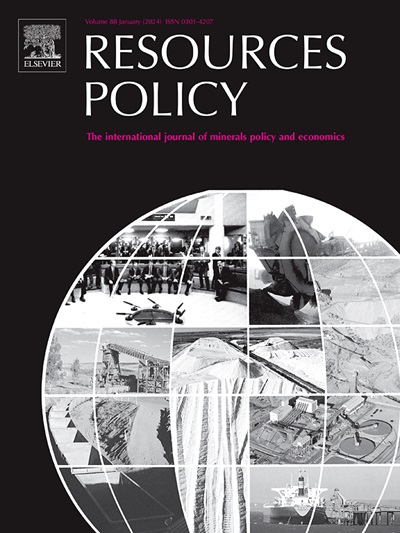Exploring shock transmission and risk diversification in REIT, commodity, and green bond markets under extreme market conditions
IF 10.2
2区 经济学
0 ENVIRONMENTAL STUDIES
引用次数: 0
Abstract
This study analyzes the connectedness between international real estate investment trusts (REITs), commodity futures (Gold, Silver, WTI oil, and Brent oil), and green bonds using a quantile frequency connectedness approach. The results show a stronger connectivity during bearish and bullish market conditions. Moreover, the connectedness is more intense in the short term (medium and long terms) when markets are in a bearish (bullish) situation. The REIT markets in Canada, France, and the United States predominantly function as net shock transmitters, whereas the Hong Kong market serves as a net shock receiver. Using a quantile-on-quantile regression, we discern a positive relationship between markets during bear phases. However, this relationship reverses to a negative when REITs are bearish and other markets are bullish, indicating that commodities and green bonds serve as a safe haven and are effective for hedging and portfolio diversification. Precious metals and green bonds prove to be more effective than oil in minimizing risk in REIT-based portfolios. Overall, these findings have important implications on risk management and portfolio optimization, particularly in times of market volatility. Policy makers can utilize these findings to implement measures that alleviate the effects of cross-market shocks and strengthen financial stability.
探讨极端市场条件下房地产投资信托基金、大宗商品及绿色债券市场的冲击传导及风险分散
本研究使用分位数频率连通性方法分析国际房地产投资信托基金(REITs)、商品期货(黄金、白银、WTI油和布伦特油)和绿色债券之间的连通性。结果显示,在看跌和看涨的市场条件下,更强的连通性。此外,当市场处于看跌(看涨)状态时,这种连通性在短期(中期和长期)内更为强烈。加拿大、法国和美国的房地产投资信托基金市场主要是净冲击发射器,而香港市场则是净冲击接收器。使用分位数对分位数回归,我们发现熊市阶段市场之间存在正相关关系。然而,当房地产投资信托基金看跌而其他市场看涨时,这一关系变为负相关,这表明大宗商品和绿色债券作为避风港,对对冲和投资组合多样化有效。事实证明,在以房地产投资信托基金为基础的投资组合中,贵金属和绿色债券在降低风险方面比石油更有效。总的来说,这些发现对风险管理和投资组合优化具有重要意义,特别是在市场波动时期。政策制定者可以利用这些发现来实施减轻跨市场冲击影响和加强金融稳定的措施。
本文章由计算机程序翻译,如有差异,请以英文原文为准。
求助全文
约1分钟内获得全文
求助全文
来源期刊

Resources Policy
ENVIRONMENTAL STUDIES-
CiteScore
13.40
自引率
23.50%
发文量
602
审稿时长
69 days
期刊介绍:
Resources Policy is an international journal focused on the economics and policy aspects of mineral and fossil fuel extraction, production, and utilization. It targets individuals in academia, government, and industry. The journal seeks original research submissions analyzing public policy, economics, social science, geography, and finance in the fields of mining, non-fuel minerals, energy minerals, fossil fuels, and metals. Mineral economics topics covered include mineral market analysis, price analysis, project evaluation, mining and sustainable development, mineral resource rents, resource curse, mineral wealth and corruption, mineral taxation and regulation, strategic minerals and their supply, and the impact of mineral development on local communities and indigenous populations. The journal specifically excludes papers with agriculture, forestry, or fisheries as their primary focus.
 求助内容:
求助内容: 应助结果提醒方式:
应助结果提醒方式:


